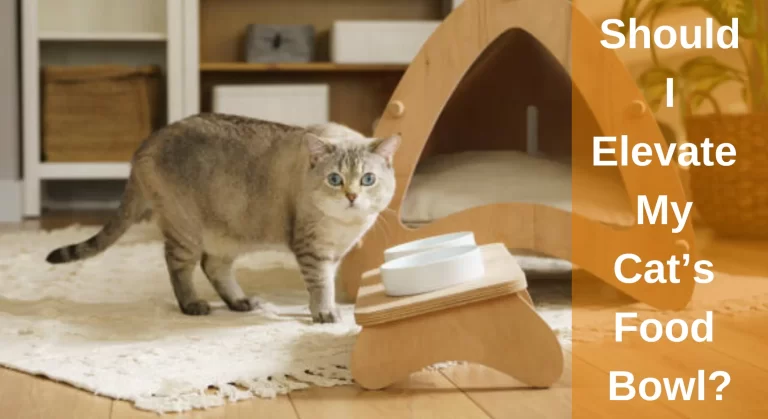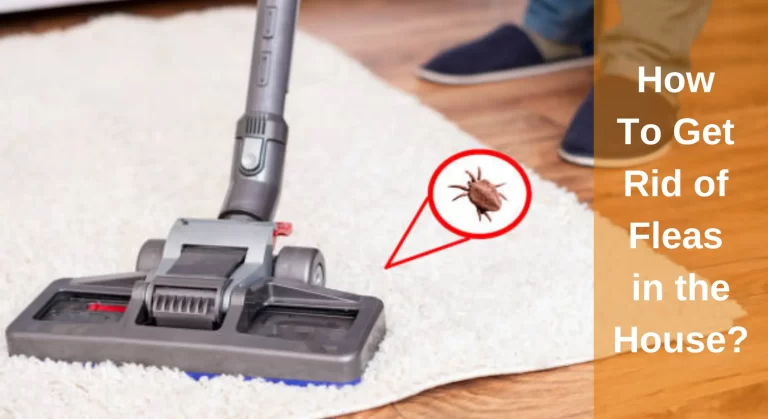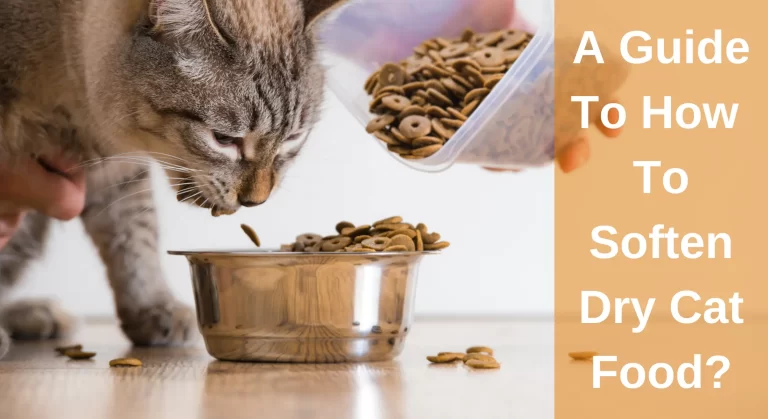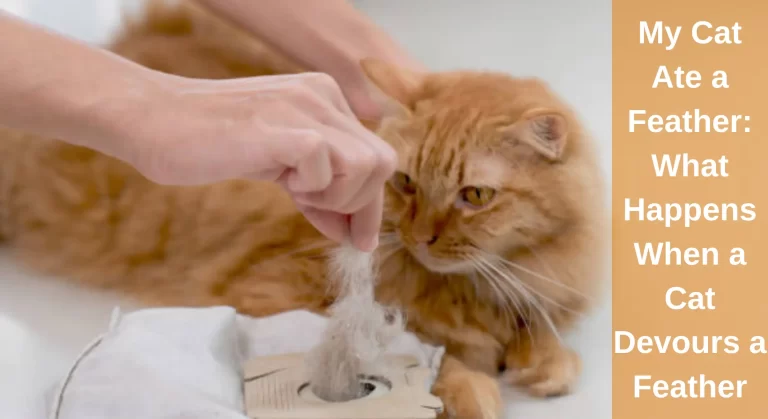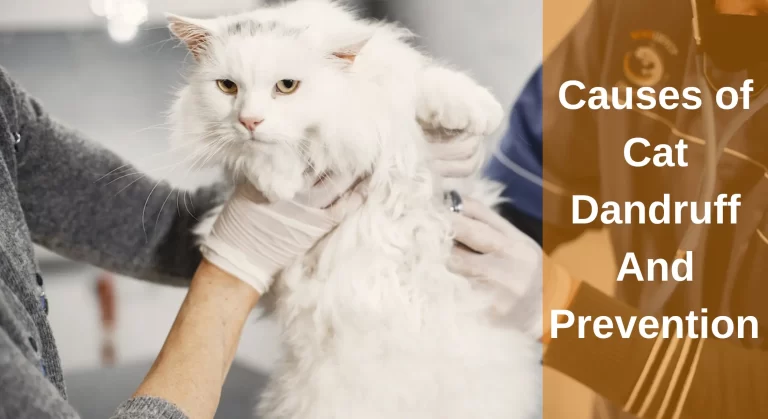Cat Not Eating After Spay: Reasons Cat Owners Should Know
You want things to get back to routine with your feline as soon as you bring her home following the spaying operation. But sometimes you see that your feline isn’t ready for a fast recovery and may not eat anything in addition to feeling lethargic and confused. Most cat owners become concerned and ask: cat not eating after spaying, why?
Felines who’ve been through the spaying surgery typically lack the desire for food or drink. It is normal for them to not eat for up to 24 hours after being spayed. Normally, veterinarians advise against feeding. In approximately 24 hours, their hunger should return, and they will eat comfortably. But if your feline doesn’t seem normal and he still doesn’t eat after 24 hours, then you must call your vet.
Although it’s quite normal for felines to stop eating after spaying, you might be thinking about the reasons that make them do so. Continue reading this blog, to learn the potential causes of your cat’s lack of appetite following surgery and workable solutions to treat this issue.

Is It Normal for A Cat to Not Eat After Being Spayed?
Yes, it is natural for a feline after spaying to stop eating. During and after your feline’s surgery, your cat friend will certainly feel some nervousness or anxiety, and the recovery period can cause stress, discomfort, lethargy, and changes in behavior, which can result in a decreased interest in food.
If your feline stops eating after the operation, do not become alarmed. Your feline’s hunger should return in around 24 hours following their operation.
But If your feline’s hunger hasn’t recovered within 48 hours, get in touch with your vet surgeon because a decrease in appetite could be an indication of a disease or uncomfortable circumstance.
Also Read: Signs of Infection After Neutering Cat
Why is My Cat Not Eating After Spaying? Reasons
You should be aware that the initial day after the spaying operation is the most difficult and that you’ll need to restrict your feline for approximately 2 weeks following the procedure. Before beginning the spaying procedure, your cat must fast for around 12 hours, and the vet might advise against feeding your feline for at least 1 day after the procedure.
However, a cat’s refusal to eat following spaying could indicate that she lacks hunger for a variety of reasons, which we’ve discussed in the section below.

1. Side Effects of Anesthesia
Your cat may feel queasy due to general anesthesia, but this side effect subsides during the following hours. Because each feline is unique, not all cats will react to general anesthesia in the same way. An anesthesia injection makes your feline sleep for the duration of the spaying procedure.
A breathing pipe is used to release a mixture of oxygen and anesthesia gas, which will keep your cat asleep throughout the treatment. The impact of this injection on your feline’s stomach may result in vomiting, which decreases appetite. Thru the oxygen system, the anesthesia gas can be expelled from the feline’s body.
The aeration is poor if the healing process is taking a long time. 36 hours following surgery, the anesthesia should be eliminated from the feline’s system, at which point the cat can resume eating.
Find Out: How Long to Keep a Cat Confined After Spay or Neuter?
2. Discomfort and Pain
Your feline will experience pain when the anesthesia wears off, which is likely to cause a decrease in appetite, particularly if there isn’t follow-up care. A painful throat occasionally results from the tracheal tube used during surgery. Due to the discomfort, a feline with a painful throat will find it difficult to consume food and drink.
When a feline stop eating after being spayed, it isn’t because she has lost her hunger; rather, it’s because it is impossible for her to eat. To ensure that your feline has a suitable after-surgery care plan, you must always call your veterinarian.
3. Stomach Issues
Imagine going without food for 12 hours, having surgery, and then taking a lot of anesthesia your tummy would undoubtedly be unhappy following the spaying procedure. So, you must stop feeding your feline.
After the treatment, your feline’s stomach can be irritated and don’t accept any meal, therefore it’s crucial that you mustn’t urge your feline to eat. To ensure that your feline heals correctly without experiencing any gastrointestinal issues, it will be ideal if you obtained recommended food from a vet.
It is usual for your feline to stop eating 24 hours just after spay treatment, but if she quit consuming for several days, you should call the physician.
4. Dehydration
Dehydration, which is similar to malnutrition and can permanently harm your feline’s organs, can occur if she goes for an extended period without eating or drinking.
Lifting the saggy skin at the back of the feline’s neck up will reveal whether your feline is dehydrated or not when you’ve observed that she isn’t getting water after having a spay. Try to be as gentle as you can. When a feline is dehydrated, the skin either falls off slowly or in worse situations forms a dome.
You’ve to be sure when your feline tries to consume water, the anesthesia needs to wear off as it will prevent her from having total control of her soft palate (a cartilaginous cover that prevents water and or any food particle from going into the lungs). Try feeding her water once the anesthesia has totally worn off.
5. Every Feline Responds Differently to the Operation
The level of sensitivity varies across cats. While waking from anesthesia and recovering command of their conscious activities, many cats may refrain from eating unless they feel safe once more.
Your feline may feel fatigued and reluctant to food because of the anxiety of operation as well as existing medical issues or subclinical illnesses like parasites and viral diseases. A cat with respiratory problems can’t sniff the smell of its food, which would make it lose interest in eating.
A postoperative infection or illness may also be the cause of your feline refusing to eat after having been spayed. This is generally the case if hunger persists for more than 2 days.
6. Elizabeth Collar
The cat’s wound is protected by the Elizabeth collar since felines are accustomed to licking and clawing their bodies. The surgical wound must be healed normally without cats’ licking. Although it can be useful since it will deter felines from accessing the stitches and wound areas and most felines will stop licking or biting their stitches.
Your cat may feel restricted and anxious because you’ve placed the Elizabeth collar on her owing to a spaying wound, and she may also lose hunger. If your feline has been trying to consume but ended up giving up, try removing the Elizabeth collar to watch how your feline behavior changes.
What to Feed Your Cat After Spay Surgery?
We highly advise selecting nutritious feline food that is balanced and nutritious that satisfies your feline’s demands. It’s always worthwhile to read the label on kibbles or bowls to find out what nutrients are included. You must use food that is produced with a large amount of fresh seafood and chicken and only organic ingredients.
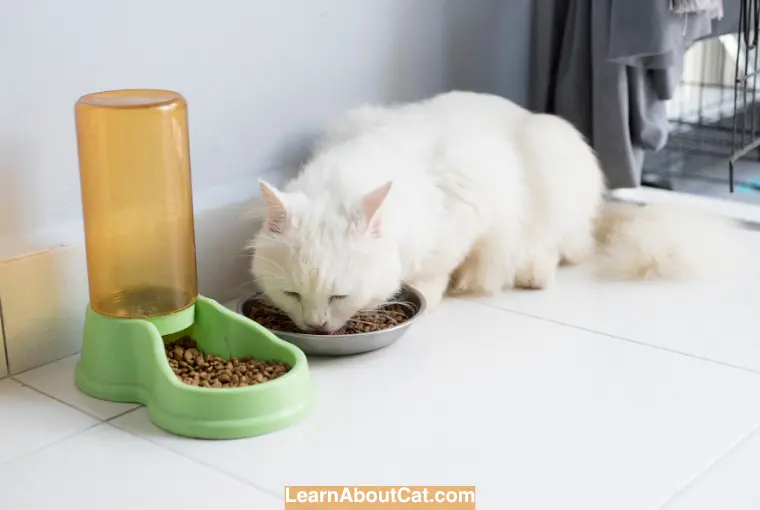
Don’t give your feline any packaged or dried foods, not even bones. With spayed felines, you don’t have to purchase special diets. You merely have to adjust the calorie intake to meet their requirements. For a few days, avoid changing your feline’s diet or giving them any extra treats. They will still be under anesthesia, so changing their diet will give them stomach aches.
When your feline is recovering from surgery, your veterinarian may advise switching them to a “healing” food. Healing diets are created to provide your feline with all the necessary nutrients it requires to become well again while reducing the stress on its gastrointestinal tract. These meals are energy-dense because they include higher levels of protein, lipids, and carbs.
As a result, your feline can consume less food while getting all the vitamins and minerals it requires. The protein in the healing meal is highly digestible so it is simple to digest and helps with cell repair and development.
After the operation, many felines have a loss in hunger, so any healing food for your feline will be tasty and enticing. Moreover, a properly shaped meal also urges them to eat food.
How Do I Get My Cat to Eat After Being Spayed? What to Do If Your Cat is Not Eating After Surgery
The feline must start eating after 24 hours because she ought to be feeling better by then, but you need to be aware that you shouldn’t make her eat. Put some meals and water in the room where they rest after the procedure, so he can consume them when he wants to eat.
But, if your feline hasn’t eaten for more than 24 hours, you can attempt the following strategies to induce him to feel hungry:
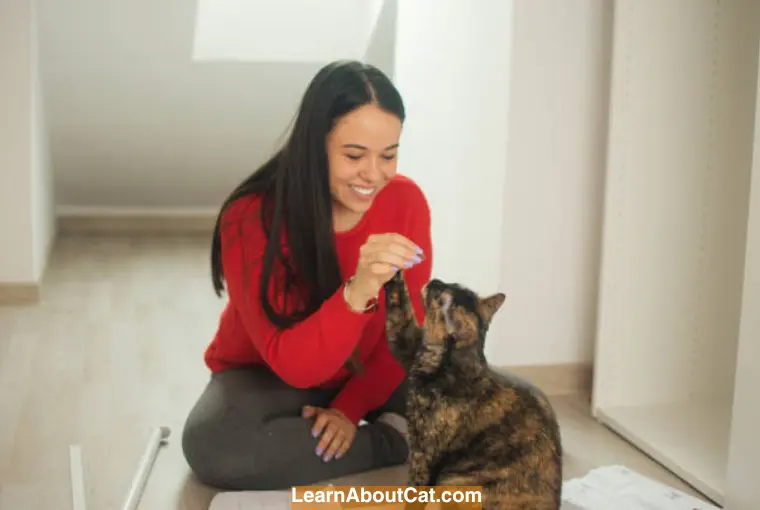
- Make tiny food portions: First of all, don’t force your feline to consume food after surgery; it is completely normal for her normal diet to take some time to return. Give your cat tiny bits of food several times during the day if she doesn’t seem to be interested in eating.
- Suggested diet by a vet: As felines tend to gain weight after spaying, it is advised that you keep an eye on your feline’s nutrition and establish a long-lasting, healthier lifestyle. Select that foods which are nutritious and energy-dense.
- Stay with your feline: Your feline will be traumatized by surgery, so stay with him and avoid leaving him alone for a prolonged time. Normally, felines love to sleep lonely, but after the operation, she started to sleep with their owners because they want some company and didn’t want to be alone.
- Feed your feline by your hand: The spaying surgery isn’t pleasant for felines, and during this period, felines may become a little suspicious. Nourishing your feline with your hand may help her feel comfortable and increases her desire for meals.
Hands must be washed before putting a small portion of the meal on your fingertips. If this doesn’t help, try placing it onto the feline’s paws; she won’t be able to avoid eating that off. Moreover, you can also gently rub it on the feline’s mouth to make her feel it.
- Try a different kind of cat food: Felines love habits, so when they consume the same item for years, they become accustomed to it and won’t eat anything else. It is you who will choose which food products you’ll offer your feline or make unique dishes to motivate her to consume as your feline could like to try something else following the operation.
- Medicines: If the aforementioned strategy doesn’t work out, there is just one issue left: getting your cat to eat. It’s not a major concern if a cat stops eating after being spayed, but you should visit the veterinarian to collect a hunger booster. After the procedure, your kitties will require energy, therefore she has to eat.
What Are the Risks of a Cat Not Eating After Surgery? What Happens If a Cat Doesn’t Eat After Spaying?
Every feline will respond to the spay surgical procedure in a different way, so it’s crucial to keep an eye on your cat’s behavior throughout that time. Although it will be surprising to observe your feline behaving differently than he usually does, there is no need to become alarmed.
Soon, your feline will get back to her regular schedule, eating, and drinking regimen. It can take a few days, but every day you will see improvement. But, if you notice that your feline isn’t getting better and stops eating and drinking for a few days, it indicates a problem. Some of these health problems are discussed below:
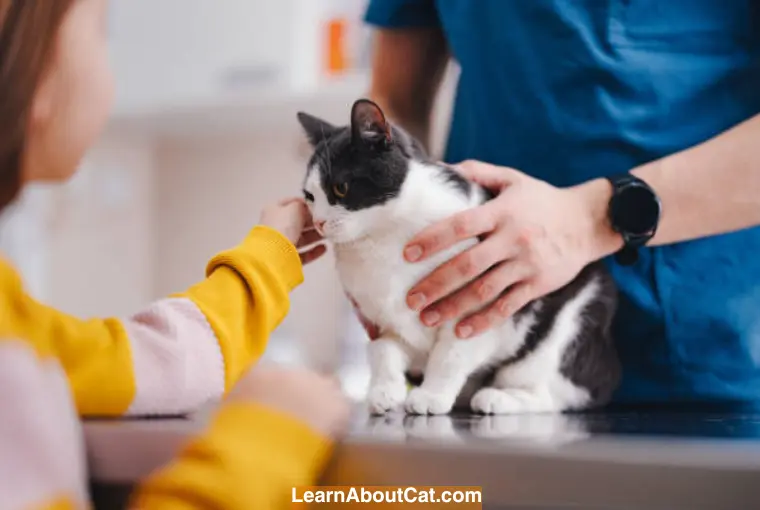
1. Hyperlipidemia Condition
Overweight felines are more likely to develop fatty liver disease than lean cats. Liver Lipidosis is one of several disorders that affect the liver, but it’s also one of the most serious and prevalent. It is hazardous because, if not caught early enough, it could turn fatal.
When a feline consumes little meals or skips meals for several days, the fats start breaking down quickly to provide the organism with the nutrition and stamina it needs to survive.
The liver may get overloaded by the rapid breakdown of fats because it’s unable to keep up with the fats in bulk, which causes fat to build up all around liver tissues and eventually causes the liver to malfunction. Jaundice is a disorder that develops when a cat is sick and when its liver isn’t functioning properly and the sclera the eyes turn yellow.
During this period, the liver must be examined as quickly as possible because it could cause the feline’s death. To identify the liver fibrosis disease in your feline, a liver examination, and blood samples are likely required. If your feline has this illness, it will probably be given vigorous dietary therapy, which is meant to improve the cat’s hunger and restore the liver’s functioning in about 6 or 7 weeks.
2. Vomiting
Vomiting in your feline could be the result of anesthesia-related nausea. In addition to being a sign of dehydration or hemorrhaging, extreme nausea may also happen. Contact your vet as soon as you realize she is constantly and uncontrollably vomiting.
3. Issues With Intestinal Health
The gut of your feline can be diseased or clogged. She can get internal injuries and dehydration if ignored. She’ll have a painfully bloated and tender tummy. She will require powerful antibacterial therapies to restore her health because she has enteritis. In order to identify the underlying reason for your feline’s sickness, your vet may advise further examinations or X-rays.
Managing Your Cat’s Pain After Spay Surgery
After having your feline spayed, she may experience irritation and pain at the operative wound for at least 1 week. As a result, it is crucial that you provide good care to her and ensure that she remains relaxed. Be sure that you have to provide your feline painkiller drugs till the time your veterinarian instructs.
Also, give them a warm place so that they will feel comfy and sleep as much as they can. Don’t wash your feline’s wound as it may increase the chances of getting infected. Keep their operative region dry and apply the vet’s recommended ointment on them to lessen their pain and to fasten their recovery.
How Long Does it Take for a Cat to Feel Better After Being Spayed?
The majority of cats start to improve in 24–48 hours, but a complete recovery requires 10–14 days. You must try to make your cat relaxed at this time and prevent them from jumping, as doing so could lead to the incision reopening. Every day, the wound must be examined for infection symptoms. Call your vet if you detect any inflammation, redness, leakage, or unpleasant odors.
Observe your feline’s behavior well. Infection may be present if, following 48 hours, they still appear tired or stop drinking or consuming food. If necessary, a check-up with your cat’s doctor or take him to an urgent vet clinic.
How Do I Know if My Cat is Okay After Being Spayed?
After your cat has been spayed, it is important to monitor their recovery and watch for any signs of complications. Here are some indicators that your cat is doing well after being spayed:
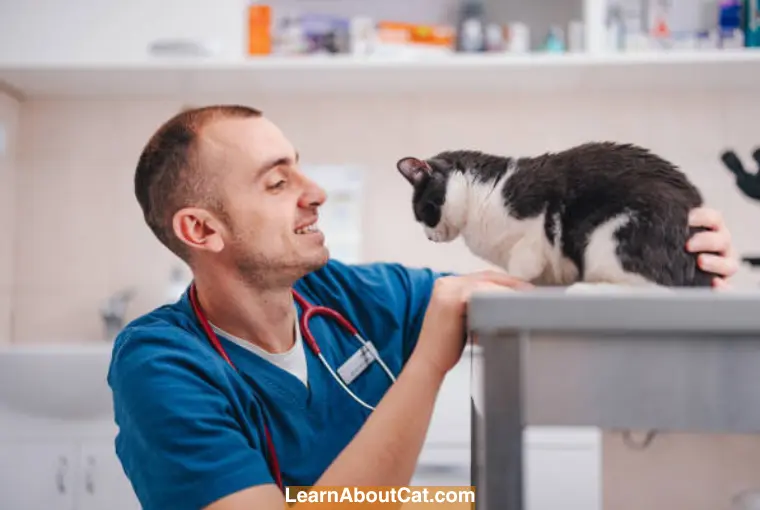
- Normal behavior: Your cat should gradually return to their usual behavior patterns. They should be alert, responsive, and interested in their surroundings.
- Eating and drinking: Although a temporary decrease in appetite is normal, your cat should gradually regain their interest in food and water. Ensure they have access to fresh water at all times.
- Incision site: Monitor the incision site for any signs of infection, such as redness, swelling, discharge, or excessive licking. The incision should gradually heal and show signs of improvement.
- Activity level: While some rest and limited activity are necessary during the recovery period, your cat should gradually become more active over time. However, avoid allowing them to engage in strenuous activities or jump onto high surfaces until they have fully healed.
If you notice any concerning symptoms or if your cat’s condition does not improve as expected, it is important to contact your veterinarian for further evaluation and guidance.
Frequently Asked Questions
How do I know if my cat is in pain after being spayed?
Abnormal meowing, a rounded back, oozing from the operative wound, limping, defecation, nausea, lack of hunger, and frequent hiding are all indications that show your feline is suffering from pain.
How much should a cat eat after being spayed?
The amount of food a cat should eat after being spayed can depend on various factors, including age, weight, and overall health. It is essential to follow your veterinarian’s post-operative care instructions, as they may provide specific guidance tailored to your cat’s needs. Generally, it is advisable to offer small, frequent meals of high-quality cat food that is easily digestible. In some cases, a specialized post-operative diet may be recommended for a certain period. Ensure that your cat has access to fresh water at all times and monitor her food intake to ensure she is receiving proper nutrition during the recovery phase.
How can I prevent my cat from licking her incision after spaying?
To prevent your cat from licking her incision after spaying, you can use an: 1. Elizabethan collar (E-collar) to prevent direct access to the incision.
2. Consider using a surgical onesie or recovery suit to cover the incision area.
3. Apply a bitter-tasting deterrent specifically formulated for pets around the incision.
4. Provide distraction and environmental enrichment to keep your cat’s attention away from the incision.
5. Supervise your cat closely and redirect her if she attempts to lick the incision.
Final Verdict
If there is daily progress, but your feline still doesn’t eat after spaying, then this is not a huge concern. You should investigate how to treat your feline properly after the procedure and how to assist your feline with any adverse issues that may arise.
Don’t delay scheduling a medical visit for a feline that has quit eating for a prolonged time. This is among the major blunders that owners make. The diet that your cat consumes has a significant impact on her general health, rehabilitation, and well-being. So, it’s highly advised to give your cats a healing diet and protein-based meals that will provide them with enough energy so that they’ll recover soon.
Your feline won’t experience as much distress and pain following surgery if you give her antibiotics and painkillers, which a veterinarian will frequently prescribe. It’s important to provide aftercare, so be calm and be there for your feline at that time.
Who is Isabella?
My name is Isabella, and I am a dedicated and knowledgeable cat enthusiast. With years of experience caring for cats and a deep love for felines, I made a mission to help other cat lovers navigate the challenges of cat ownership.

